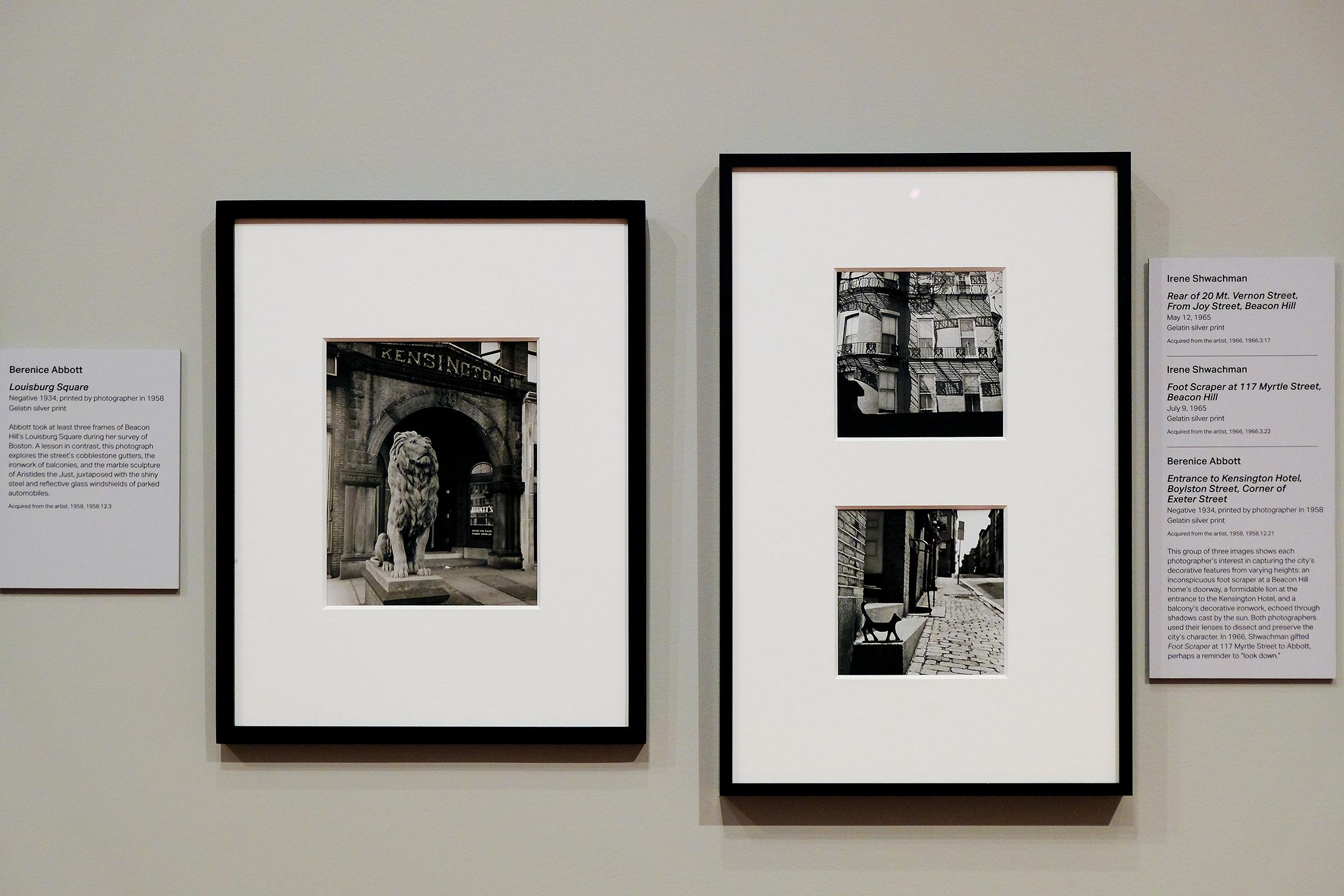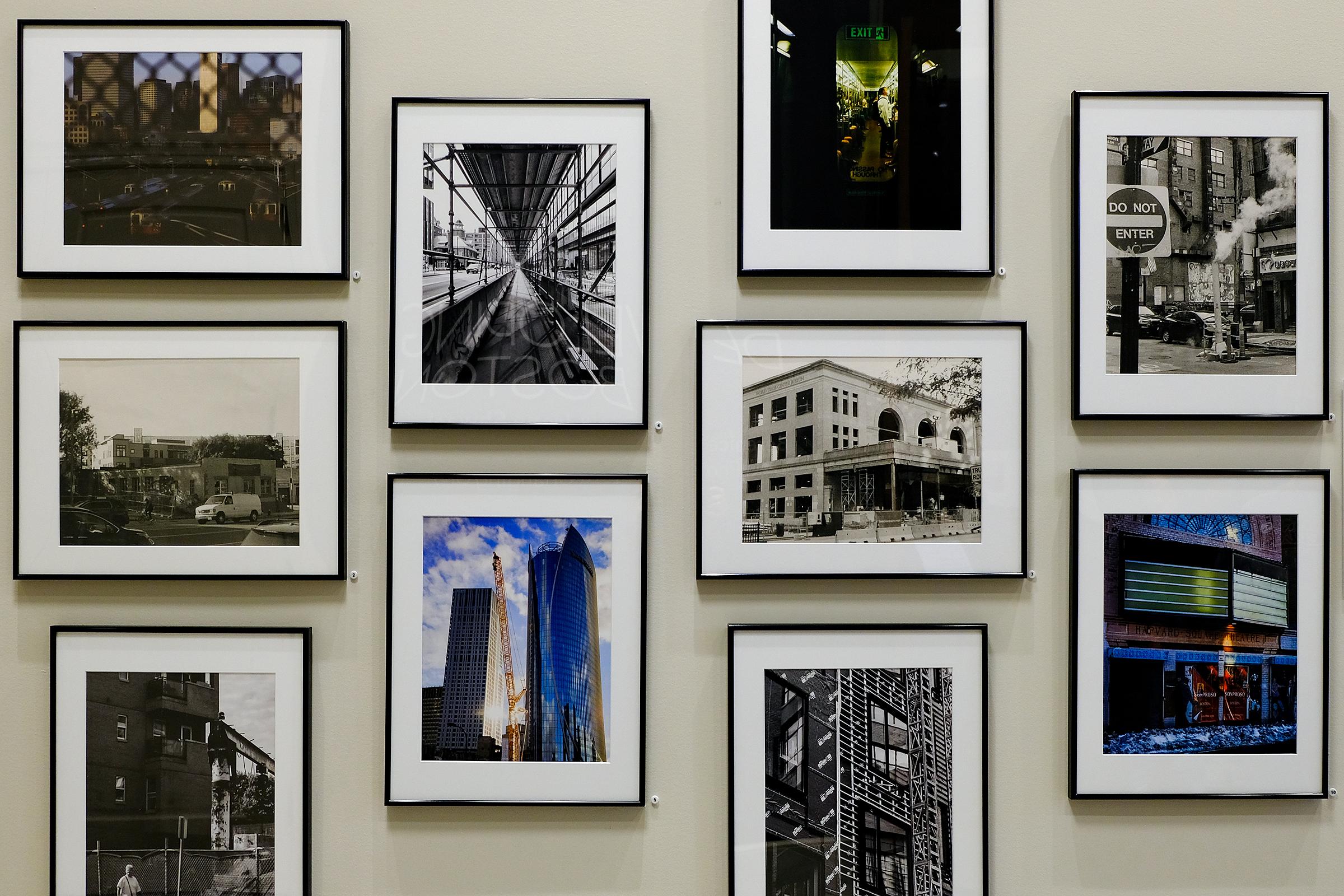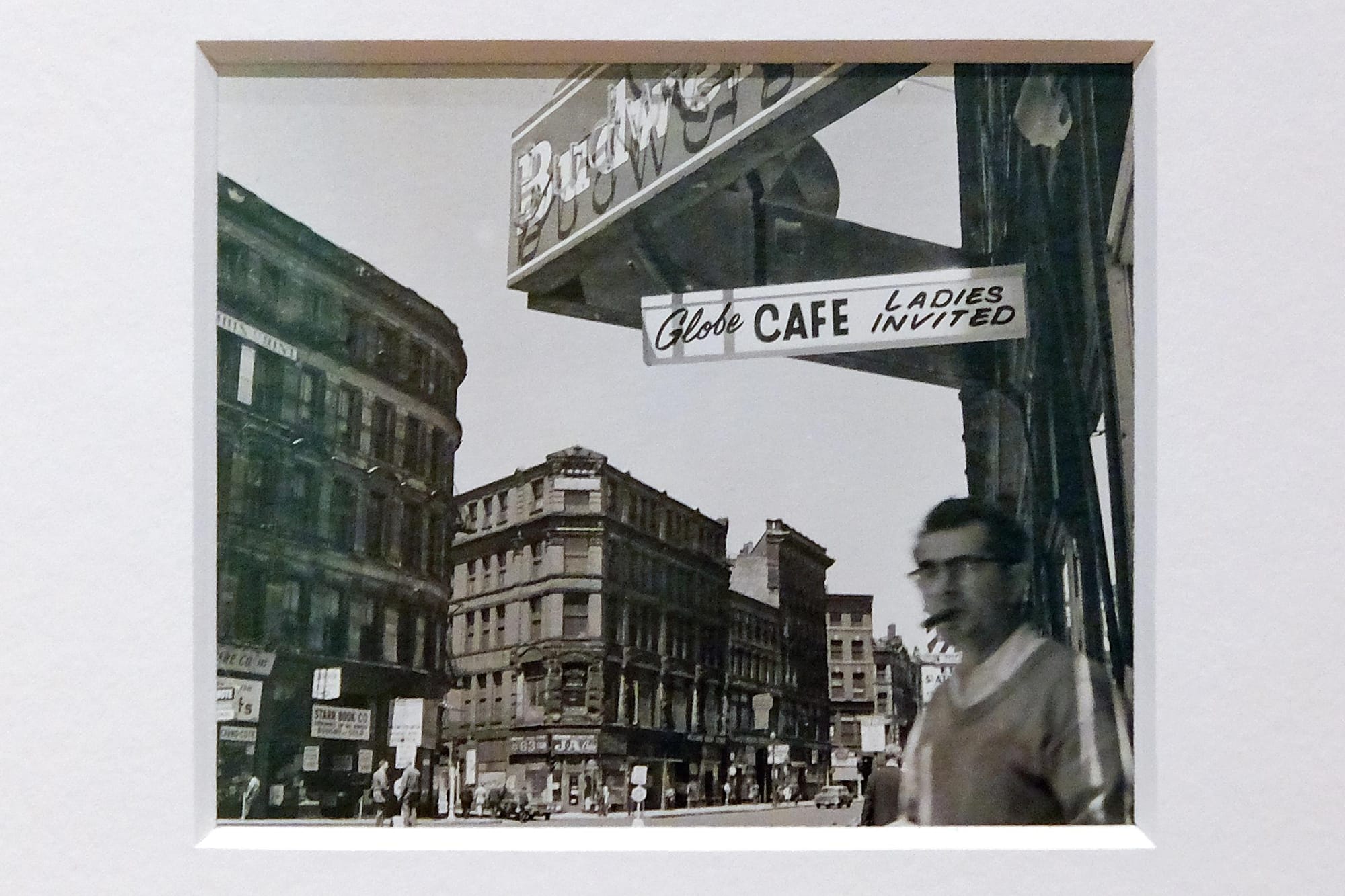Developing Boston: Berenice Abbott & Irene Shwachman Photograph a Changing CityThe Boston Athenaeum
10 – 1/2 Beacon St.
Boston, MA 02108
Cities tell stories. This is particularly evident (if not inescapable) in Boston.
Developing Boston: Berenice Abbott & Irene Shwachman Photograph a Changing City, which is on view at the Boston Athenæum through the end of the year, is a clear demonstration of the stories that surround us. The exhibit features the photographs of Berenice Abbott, a famous 20th-century photographer who was commissioned in 1934 to create a photographic survey of Boston’s nineteenth-century buildings. Twenty-five years later, Irene Shwachman, her mentee, photographed Boston’s redevelopment for her project The Boston Document, which she began in 1959 and continued for nine years. The exhibition showcases the two women’s photographs in conversation, examining how each photographer approaches and views the city.

The exhibition opens with two photographs of Adams Square taken by each photographer multiple years apart. That in itself seems like a reflection of the passing of time, change, and the importance of documentation, since Adams Square was demolished in 1963 to make way for Boston’s brutalist City Hall, and no longer exists.
Berenice Abbott, using a large format camera, focuses on the historic architecture of the square, although she can’t help including glimpses of the present through the inclusion of cars and other modern markers.
Shwachman, on the other hand, takes a different approach — more dynamically framing the square with her handheld camera and showing it bustling with people, modern signs, and a blurred man in the bottom right caught in motion.
While Abbott was commissioned to turn her lens to the Boston of the past, Shwachman focuses on urban renewal and looks toward the future. It’s an interesting conversation where they seem to meet in the middle.
Heading a section called “Presence,” just inside the exhibit, are two portraits of the artists, both taken by Shwachman. One is of Abbott on the streets of Boston, in the action of framing a shot. Tthe other is of Shwachman herself reflected and framed in a mirror in what appears to be a storefront window. In an exhibition scant of people, it’s a fun peek behind the lens at the artists. It’s also a nice lead-in to the theme of the exhibit as a whole. In both cases, neither photographer exists alone; they are framed within the context of their surroundings. Their portraits become both portraits of the artists and portraits of Boston.
The themes of presence and absence play throughout the show as even those glimpses of the city that don’t directly show people are marked by their presence through open windows, signs, or other markers of their inhabitants. As I wandered from image to image, I was reminded of the experience I get while driving or strolling through neighborhoods in the city, often feeling that observing the different storefronts, decorated porches, and street art is its own form of people watching.
The exhibition sometimes pairs photographs taken in the exact same location multiple years apart, like Berenice Abbott’s photograph of Old West Church in 1934 paired next to Shwachman’s photographs of the same location in the 1960s. It’s an interesting document of the city itself, of course, how it’s changed and how it’s remained the same, but it’s also an interesting question about how narrative voice is ascribed to photographs. While the exhibition text defines the photographers by their different styles, the descriptions of each image aren’t hung right next to the images on the wall, but rather grouped nearby in lumps. At first glance, especially if you are not familiar with the photographers and their work, it can take a bit of cognitive energy to figure out which photographer photographed which image.
Particularly when dealing with a subject as seemingly inhuman as a building and employing a medium as technically precise and mechanical as photography, I couldn’t help wondering if the narratives attributed to these images were really the result of the photographers imbuing each scene with their own sensibilities through their unique framing and focus. Maybe we, as viewers, were being prompted to project our own narratives onto the scenes, influenced by the narrative of the exhibition and exercising our own version of meaning making. Especially in an age when everyone owns a camera, photographs can be geotagged to specific locations, and Google Street View archives the development of cities in a sweepingly systematic way, it’s an interesting meditation on the role of intentionality and the role of the artist.

Looser, more poetic ties are also drawn between the two artists, pairing their photographs based on their use of shadows, detail, or their focus on the decorative features that make up the city’s character.

Ultimately, the exhibition is a celebration of continuity and the impact of influence. A case near the center of the exhibition showcases books by Eugène Atget, who influenced both Abbott and Shwachman. Outside of the exhibit, the work of teen photographers from Artists For Humanity responds to the themes of the show by photographing Boston’s continuing redevelopment in the 21st century. Shwachman’s work serves as a continuation of Abbott’s legacy, while the young artists from Artists For Humanity offer a glimpse into the future.
The exhibition invites us to reflect on our place in the present moment and how the city around us is constantly growing, shrinking, adapting, and transforming in response to our daily lives and the rhythms of its inhabitants. Buildings have the power to serve as visual storytellers, reflecting the history, values, and social fabric of a place, and crafting a vivid portrait of its character. As Abbott expressed to Shwachman as she was creating “The Boston Document,” “The buildings are the people.”






